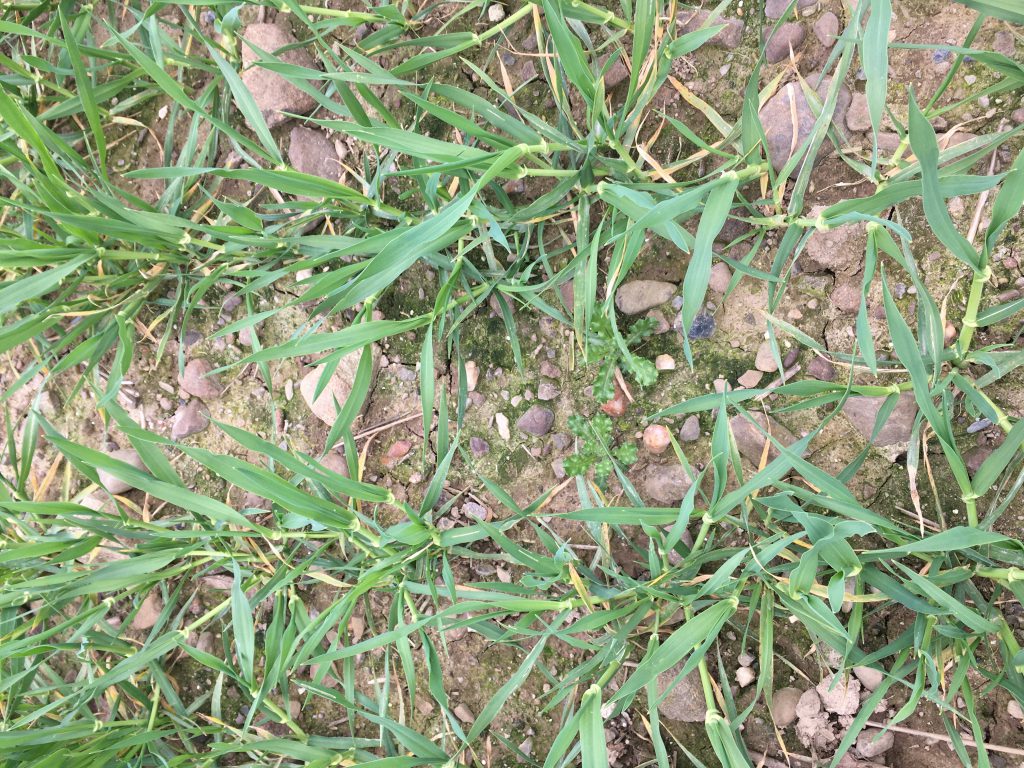This season, farmers will not be meeting with their agronomist who is out walking their crops. Agronomists will walk crops on their own and the information will be passed on over the phone or by electronic means in keeping with Government and Health Service Executive (HSE) guidelines.
With that in mind, AgriLand will be talking to agronomists each week who are out crop walking. This will hopefully give farmers an insight into what’s happening in fields across the country and what to look out for.
Talking to James this week, he said that farmers are adhering to the guidelines in his area. He explained that Brett Brothers use Gatekeeper (record system) to communicate recommendations and maintain crop records so that end of things is straight forward.
The region is one that is always ahead in terms of sowing time and management; in fact on his books James has many winter cereals pushing for GS30 and even oats moving to GS31.
“Winter crops are well ahead in this part of the country, while spring sowing was 70-80% complete on Wednesday,” he noted.

James Irish is an agronomist at Brett Brothers. This picture was taken in the 2018 harvest. These days he’s busy walking crops
Winter barley
On his travels this week James has seen a lot of winter barley.
Most of the winter barley would have received its main split of nitrogen this week or will in the next couple of days to bring it up to 120 units/ac.
Approximately 80% of winter barley received an autumn herbicide in his area. Those which have not will receive an application in the coming week or so.
He added that when the temperatures increase, growth regulator will be the next port of call. Actives and mixtures will depend on sowing date, evenness of the crop and conventional or hybrid barley.
Some crops are just going to get a bit of CeCeCe with weed and wild oat spray and other crops might get Moddus, CeCeCe and a fungicide.
Like so many winter barley crops there are some that are thin; growth regulator will help to even out and thicken crops by increasing tiller survival, which will in turn optimise ear number/m².
He added that he “would like to get growth regulator out to try and even up the tillers. The strong tillers are heading for GS30”.

James was examining growth stages of crops. Many winter barley crops are at GS30 and heading for GS31 in the area
Fungicide will be preventative with only small bits of rhynchosporium in Cassia and net blotch in Infinity. In general, he added that hybrids are fairly clean.
Any trace element deficiencies will also be looked after – manganese and zinc are the most common in the area.
James noted that farmers in his area were lucky to get out low rates of nitrogen to winter cereals in February and this stood to plants.
Winter wheat
Winter wheat crops awaiting a herbicide will receive an application when weed numbers increase. Pacifica and Calibre Max will sort out a lot of weed problems in the area.
James plans on applying a mix of Moddus and CeCeCe to the earlier sown and more advanced crops early next week; providing temperatures rise.
He will monitor crops for yellow rust in the coming days, as conditions are ideal in susceptible varieties.
Oilseed rape
As can be seen in the image at the top of the article, oilseed rape crops have started to flower. These crops will receive final nitrogen in the next few days, as flowering begins.
So far oilseed rape crops on James’s books have received two fungicide applications for light leaf spot – Proline in January and again in the past seven days, along with a growth regulator.
Winter oats
Advanced winter oats will receive final nitrogen applications in the coming days. The plan for oats is Moddus, CeCeCe, Cameo Max for weeds and Talius as a preventative fungicide.


